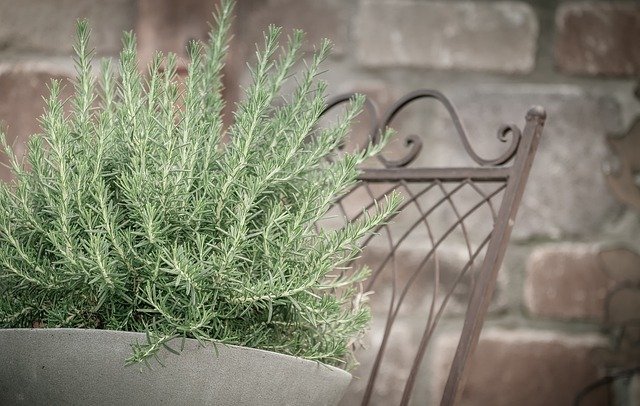Growing rosemary indoors has a number of benefits. You can control the environment more closely, ensuring your rosemary will thrive. Rosemary is a hardy herb that can tolerate a wide range of growing conditions, but it does best in full sun and well-drained soil. Rosemary is an evergreen herb, meaning it will keep its leaves all year round. This means you can have a continuous supply of rosemary, even in the winter.

Table of Contents
How to grow rosemary indoors properly?
Just like most herbs, growing rosemary indoors starts with proper potting. Choose a pot that is at least 6 inches wide and has drainage holes. Use a well-draining potting mix or make your own by mixing equal parts peat moss, perlite, and vermiculite. Rosemary can tolerate a wide range of soil types, but it prefers slightly acidic soil with a pH between 6.0 and 7.0.
Watering rosemary indoors.
Water your rosemary plant regularly, keeping the soil moist but not soggy. Rosemary is drought-tolerant, so it can go a few days without water. But if the leaves start to turn brown or wilt, that’s a sign that the plant is thirsty. Allow the top of the soil to dry out before watering again. During the winter, water your rosemary plant less frequently.
Some common problems for rosemary related to watering are root rot and leaf drop. Root rot is caused by too much moisture in the soil, which can happen if you water too often or don’t have a well-draining pot. Leaf drop is a sign of too little water. If the leaves start to fall off, increase watering frequency.
Fertilizing rosemary indoors.
Fertilizer is a substance that is applied to plants to provide them with nutrients. Fertilizers typically contain three main nutrients: nitrogen (N), phosphorus (P), and potassium (K). These nutrients are essential for plant growth and development.
The nutrient that rosemary needs is nitrogen. Nitrogen helps rosemary plants grow strong stems and leaves. It also helps the plant produce chlorophyll, which is necessary for photosynthesis. Rosemary doesn’t need a lot of nitrogen, so it’s best to use a fertilizer with low nitrogen content.
Light requirement for indoor rosemary.
Rosemary prefers full sun, but it can also tolerate partial shade. If you’re growing rosemary indoors, place it in a spot where it will get at least 6 hours of direct sunlight per day. If you don’t have a spot that gets that much sun, you can supplement with artificial light. grow lights are ideal for rosemary plants.

Pruning indoor rosemary.
Rosemary responds well to pruning, so don’t be afraid to trim it back. Pruning encourages the plant to produce new growth, which can make the plant bushier and fuller. To prune rosemary, simply cut off the tips of the stems.
When to harvest rosemary indoors?
Harvest rosemary when the plants are 6-8 weeks old. You can harvest rosemary by cutting off the stems or by snipping off the leaves. If you’re harvesting the stems, cut them just below a leaf node. This is the point on the stem where new leaves will grow. When harvesting rosemary leaves, be sure to only take the leaves from the top half of the plant. This will ensure that the plant continues to grow.
Rosemary is a versatile herb that can be used in a variety of dishes. It’s commonly used to flavor meat, vegetables, and soups. Rosemary can also be used to make tea and essential oils.
Harvesting rosemary indoors.
You can harvest rosemary at any time, but the leaves are most flavorful just before the plant flowers. Cut off the stems with sharp scissors, leaving about 2 inches of stem on the plant. You can use fresh rosemary in a variety of dishes or dry it for later use. To dry rosemary, tie the stems together and hang them upside down in a dark, dry place. After the rosemary has dried, strip the leaves from the stems and store them in an airtight container.
Rosemary is a hardy herb that can tolerate a wide range of growing conditions. With proper care, rosemary plants will thrive indoors.

Gardening is my passion and growing plants indoors has always been a stress relief for me. Grow a banana tree in my apartment once (although failed to produce bananas).






